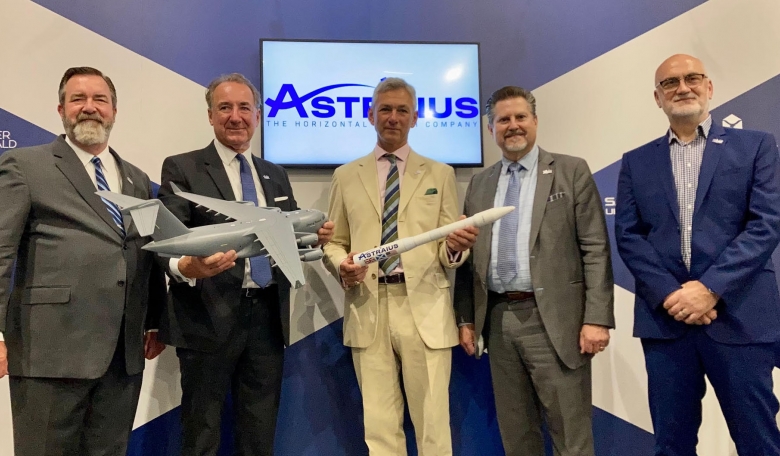Northrop Grumman is to supply first and second motors and Exquadrum will provide the upper-stage motor. Grumman's Orion solid rocket motors will boost the Astraius launch vehicle after its extraction from an unmodified C-17 carrier aircraft, while Exquadrum's bespoke upper stage will place satellites in precise orbits.
The Astraius rocket, with a payload capability of 800 kg to low Earth orbit (LEO), will ignite within seconds of being released via a parachute system on a cargo pallet from the back of the aircraft.
“It will be a bespoke Astraius launch vehicle,” said Shane Clark, vice-president of the firm’s engineering and program division. “Our strategy is to minimise new development so, essentially, we have stitched together flight-proven components.
“This is a new launch vehicle but it's not a brand new first stage, it's not a brand new second stage, and it probably not a brand new faring or avionics system,” he explained. “Most of the rocket’s components will already have flight pedigree which gives assurance to both customers and the insurance market.”
Huntsville-based Clark told ROOM that the global reach and flexibility of the C-17 military transporter aircraft would allow Astraius to offer an industry-leading capability for small satellite launches to LEO.
“We will not be confined to a spaceport or by the weather in the same way that vertical launchers are,” he added. “With horizontal launch wherever that customer wants to go, we will fly to that optimum launch point over water and put them into exactly the right inclination.
“For example, if you're on the West Coast of California you cannot launch into a geosynchronus orbit because you can't launch east. Conversely, if you're in Florida typically you're not going to be able to get to a polar orbit.”
While launching a dozen rockets per year each carrying a 800 kg satellite would be an ideal scenario, Clark said the prime market would most likely be for the launch of cubesats in a wide variety of different configurations, either for single or multiple customers.
Announcing the tie up with Northrop Grumman and Exquadrum at this week’s Farnborough International Airshow, Astraius chairman Sir George Zambellas said: “This is a hugely exciting moment for Astraius. We have a winning combination of proven launch and propulsion systems paired with exquisite rocket motor technology to produce a world-class capability.”
Kevin Mahaffy, CEO of Exquadrum, said: “We are excited to be part of the outstanding team that Astraius has put together to bring their unique horizontal launch vehicle to market. Exquadrum's controllable solid rocket motor technology, with its throttlability and precise termination ability, is an excellent fit for Astraius' upper stage application.”
Astraius is building two cleanrooms at Prestwick Spaceport’s new £23 million facility, meaning two rockets and their payloads can be processed simultaneously, giving the option of flying a second mission within hours of the first.
Astraius will base its launch and range operations in the UK at Scotland’s Prestwick Spaceport, which will provide all necessary ground-based requirements in bespoke, state-of-the-art facilities under an agreement signed in September 2021.
The Boeing C-17 Globemaster aircraft was developed for the United States Air Force (USAF) from the 1980s to the early 1990s by McDonnell Douglas. It is widely used by air forces around the world for long range, heavy-lift strategic military transport.
Main photo at top of story (pictured, from left): Kevin Mahaffy, Chief Executive Officer of Exquadrum; Sir George Zambellas, Chairman of Astraius; Ian Annett, Deputy Chief Executive of the UK Space Agency; Eric Schmidt, President of Exquadrum and Mick O’Connor, Programme Director at Prestwick Spaceport.











